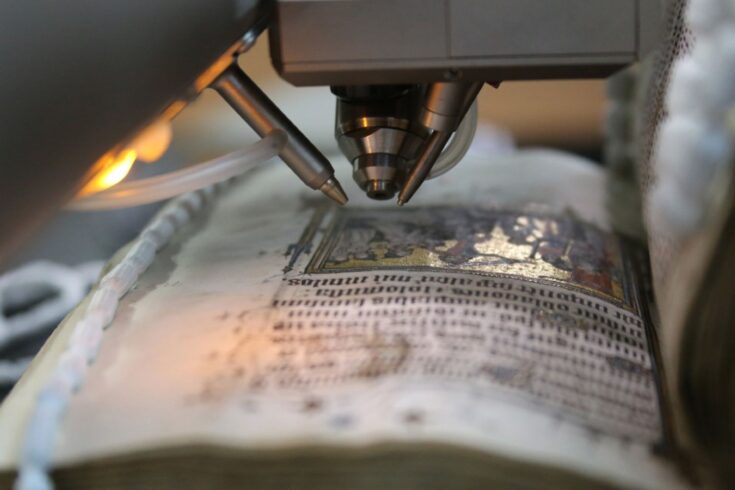Cambridge has many institutions and museums that provide homes for historic artefacts, ranging from Titian artworks and illuminated manuscripts to early hominid tools.
The staff in these institutions all face the challenge of how to preserve the objects that they have, how to understand them and how to engage the public with them.
About the project
To address the challenge, a number of Cambridge’s museums and research institutes have increasingly been working together, pooling their capabilities via the Cambridge Heritage Science Hub (CHERISH). These include:
- the Fitzwilliam Museum
- McDonald Institute for Archaeological Research
- the Museum of Archaeology and Anthropology
- Cambridge University Library
- Hamilton Kerr Institute.
An award from the Arts and Humanities Research Council’s Capability for Collections Fund has enabled the hub to upgrade its scientific equipment and laboratory facilities, giving all its partner institutions the ability to do much more.
The project formalised and enhanced sharing and collaboration, which was already happening organically among those with an interest in archaeological and heritage science.
Marcos Martinón-Torres, Professor of Archaeological Science at the Pitt Rivers Museum explains: “We started looking at how we can be more than the sum of our parts, with complementary equipment and a structured network of expertise spanning humanities and sciences.”
The new infrastructure is distributed; there is no centre to the CHERISH network. Some of the equipment is in a fixed location (such as a multispectral imaging system for large books, maps and manuscripts), but much of it is portable, for use on any of the hub’s sites.
Impacts of the project
State-of-the-art instruments give opportunities to work on a much bigger scale, with more efficient workflows and more accurate analysis. For instance, the archaeological institutions have access to a large scanning electron microscope and micro CT scanner for producing 3D images of the internal structures of objects.
Scientists at the Fitzwilliam Museum often had to borrow equipment to analyse the objects in its collection. Since the hub started, they have access to a full set of non-invasive instruments, meaning there is no need to compromise on the types of analysis that can be done.
“Our new macro XRF scanner can scan whole paintings,” said Paola Ricciardi, Senior Research Scientist at the Fitzwilliam Museum. “It is one of only a few in the UK, and we make it available to commercial clients such as the National Trust.”
The new equipment has made it possible to explore social and cultural histories. It has been used, for example, in the Fitzwilliam Museum’s ‘Being an Islander’ exhibition, which looks at cultures in the Mediterranean, as well as the ‘Gold of the Great Steppe’ exhibition, investigating artefacts from Kazakhstan.
Students and early-career researchers are trained to use the equipment, and the hub’s partners can also undertake technical analysis for external collections.
The new infrastructure makes it easier to engage with members of the public through public festivals and open days, where they make use of the latest research. The Fitzwilliam Museum, for example, has run workshops for primary school teachers in its laboratories. The CHERISH project has enabled the arts and sciences to work together to shed new light on cultural heritage.

